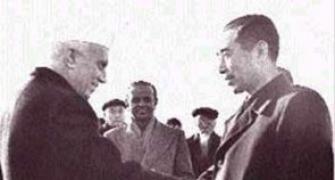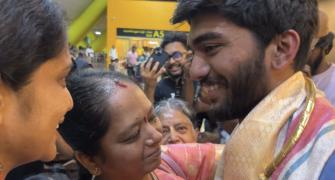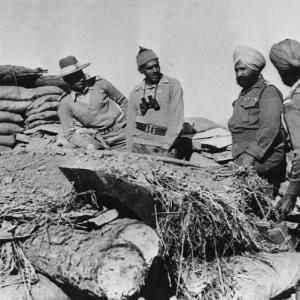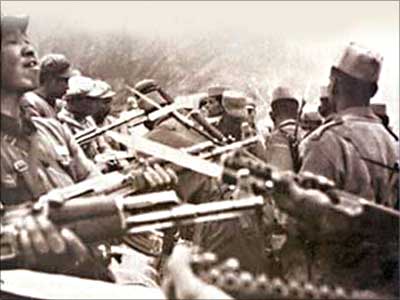Rup Narayan Das reveals the towering Odisha leader's role in improving national security after the 1962 War with China.
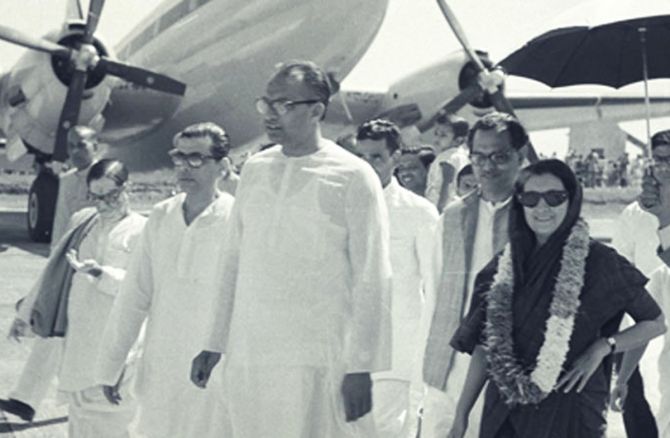
At a time when India has almost become a non-NATO ally of the United States after the signing of the Basic Exchange and Cooperation Agreement during the third edition of the 2+2 strategic dialogue between India and the US under the looming threat from its northern neighbour, it is worth a while to recall the seminal role of the indomitable Biju Patnaik, the late chief minister of Odisha and veteran Parliamentarian in laying the foundational edifice of the strategic defence and security cooperation with the US to face the China threat.
A major offshoot of the India-China war of 1962 was the intensification of cooperation and confidentiality between America's Central Intelligence Agency and India's Intelligence Bureau.
Immediately after the 1962 War, the US assisted India in raising certain paramilitary formations on the India-China border.
The creation of the Tibet force was one such instance, which was conceptualised to co-opt Tibetan refugees and make them warriors.
The idea was mooted by Biju Patnaik to Prime Minister Jawaharlal Nehru who endorsed it.
With the help of American financial aid and a CIA instructor team, General Sujan Singh Uban set up the training camp in the tranquil hill village of Chakrata in present day Uttarakhand.
The Tibetan unit exceeded all expectations. The Tibetans particularly excelled as parachutists and had the distinction of conducting jumps at the altitude up to 15,400 feet using chutes specially procured by the CIA.
In later years, the unit developed into what is now called the Special Frontier Force which valiantly fought in the Galwan Valley on August 29/30, 2020.
One of its brave soldiers Nyima Tenzin sacrificed his life while defending the Indian border.
Yet another programme with the objective to lend air support to the Tibetan commandos and agents was the Aviation Research Centre, a covert aviation outfit for use along the India-China border.
This was also the brain child of Biju Patnaik. The ARC was actually a subsection of the Intelligence Bureau and was staffed by IB officers and aircrews deputed from the Indian Air Force.
Its aircraft consisted of transport and light planes mostly came from the US, courtesy the CIA.
Biju Patnaik was again instrumental in setting up the project. Patnaik visited the US in 1963 to work out the concept with the CIA.
The Americans saw merit in the plan and dispatched two officers to India for initial fact finding tour. Mr Rameshwar Nath Kao was its first director.
As the US was deeply concerned about China's nuclear programme, it wanted to keep a tab on the development of nuclear weapons by China.
Not many options were available to monitor China's nuclear programme.
One option available to the US was satellite imagery which was not very developed then and the resolution of the imagery were not of very high order.
Another US option, the U-2 spy plane, had its own set of problems.
As China's test sites were believed to be concentrated in distant Xinjiang, spy planes launched from airstrips on Taiwan did not have the range to make the round trip.
The CIA had earlier made discreet use of an airfield at Peshawar, Pakistan, which put Xinjiang within range.
But that had ended after the diplomatic furore following the 1960 shoot-down over the Soviet Union of an U-2 aircraft launched from Peshawar.
It was against this backdrop that the ARC airbase at Charbatia configured between the US and India.
In May 1964, a small CIA team arrived at Charbatia with an unmarked spy plane.
As planned, the plane performed a single mission over Xinjiang and headed back to Charbatia.
As it touched down, its brakes failed, and the U-2 rolled off the end of the runway.
Wary of the media exposure, ARC personnel put the aircraft into the hanger and waited for the CIA technicians to make the necessary repairs.
Once the repairs were completed, the plane was discretely flown out without attempting further over-flights from Indian soil.
A report based on a set of declassified documents obtained from the CIA under the freedom of Information Act in August 1963, the independent National Security Archive shed more light on the incident.
According to this report, the use of Charbatia, was agreed during a meeting between President Kennedy and the visiting Indian President Dr Darvepalli Radhakrishnan on June 3, 1963, but Indian work to improve it took longer than expected, so the missions took over from Thailand's Takhili.
The report further said the first mission out of Charbatia did not take place until May 1964.
The US detachment stayed on at Charbatia till 1967 and served as an adjunct to the main operational base in Thailand.
The pilots and aircraft left Charbatia, but others remained in place to save staging costs.
In December 1964, when India-China tensions increased along the border, Detachment G returned to Charbatia and conducted three highly successful missions, satisfying all requirements for the border region.
By this time, Takhli had become the main base for Detachment G's Asian operations, and Charbatia served merely as a forwarding staging base.
The information gathered from aerial surveillance was yet another aspect of the close India-US cooperation in the immediate aftermath of theWar of 1962.
Rup Narayan Das. a Delhi-based China scholar, is a senior fellow at the Indian Council of Social Science Research at the Indian Institute of Public Administration, New Delhi.
This column is based on M S Kohli and Kenneth Conboy's book Spies in the Himalayas: Secret Mission and Perilous Climb.
Feature Presentation: Rajesh Alva/Rediff.com

